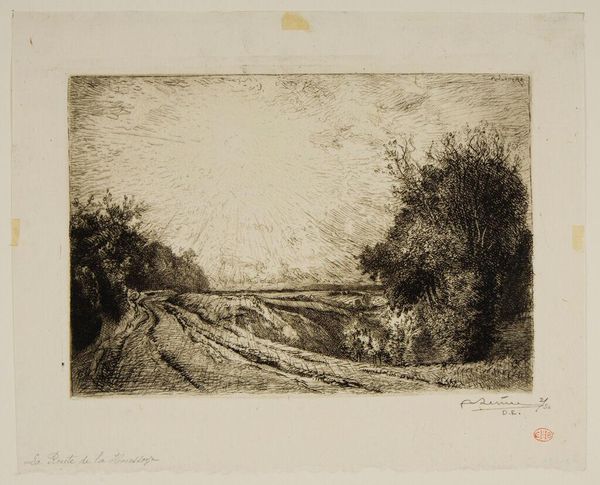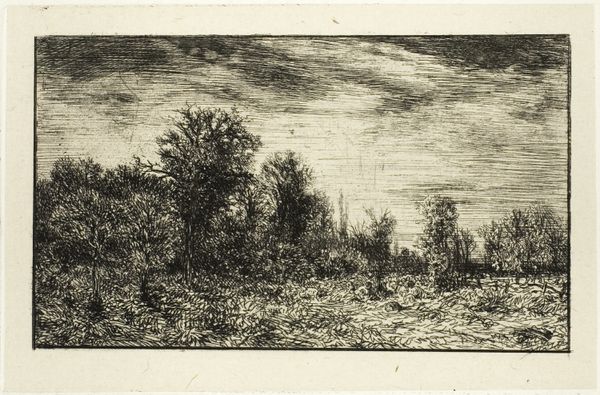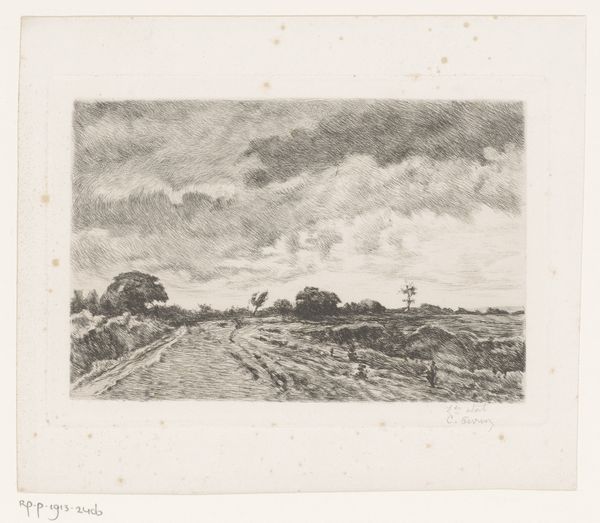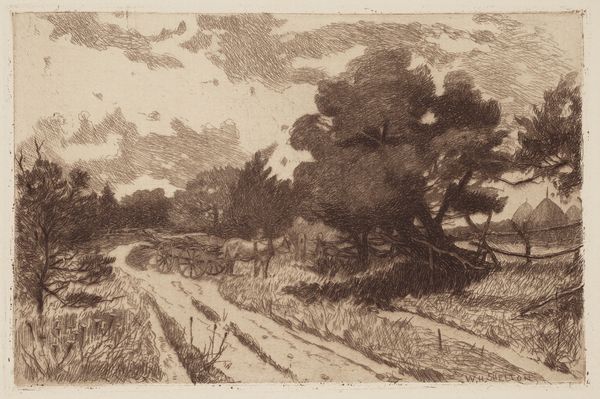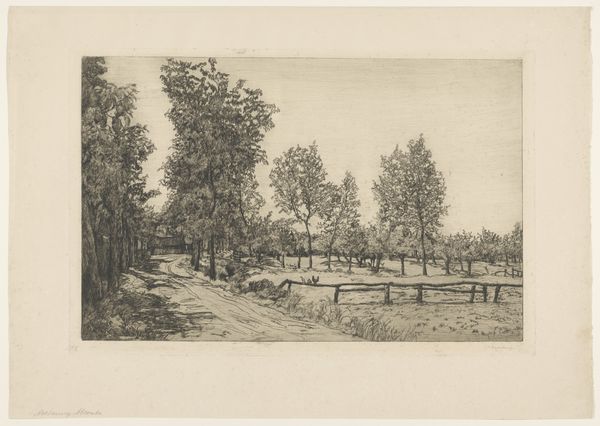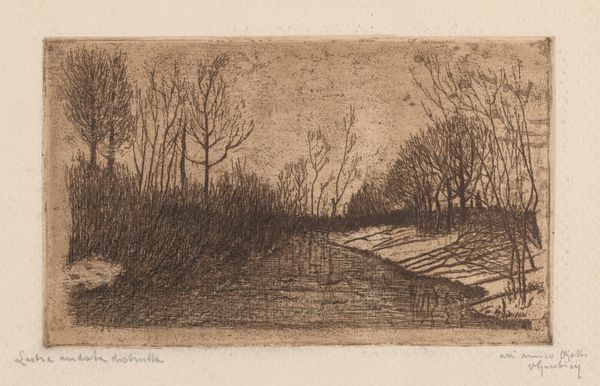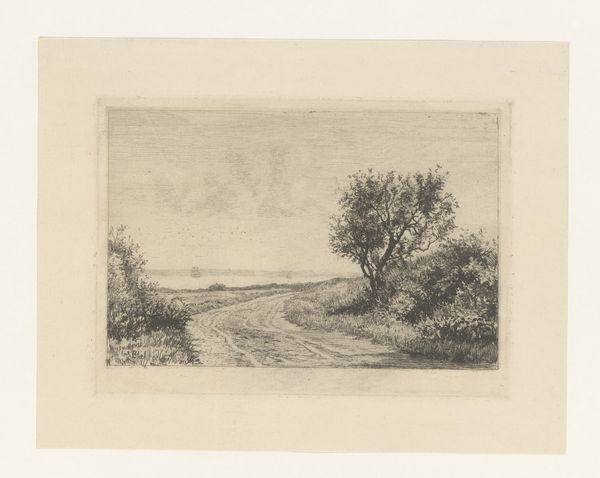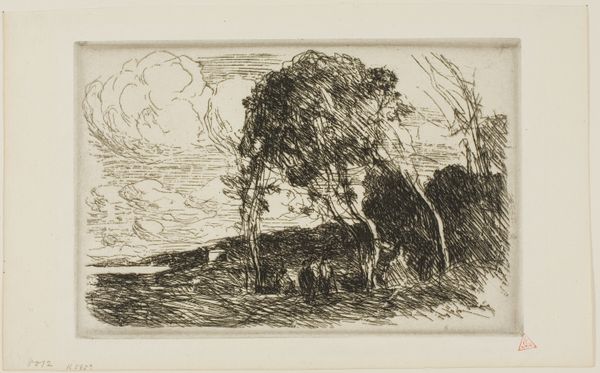
drawing, print, etching, paper
#
drawing
# print
#
etching
#
landscape
#
paper
Dimensions: 181 × 266 mm (image); 192 × 275 mm (plate); 245 × 320 mm (sheet)
Copyright: Public Domain
Curator: We’re looking at Auguste-Louis Lepère’s etching from 1913, titled "The Road to Houssoye," which resides here at The Art Institute of Chicago. Editor: There's a stark, almost blinding light emanating from the horizon, which gives the work a sort of dreamy, ethereal quality. The dirt road itself has a palpable materiality though, like you could almost feel the ruts. Curator: Right, Lepère really captures the textures here with his skillful etching. It’s interesting how he balances that strong light with such grounded, earthly details, isn't it? What I find fascinating is that, by manipulating the density of the etched lines, Lepère actually gives a sense of atmospheric perspective in what could otherwise be just another rural landscape. Editor: Absolutely. And that density also speaks to the labor involved in etching—the physical act of repeatedly scoring those lines into the metal plate, inking it, pressing it… you can sense the hand of the artist, the grit of the workshop. There's something satisfying about the tangible process informing this ephemeral feeling of light. Curator: Yes! Almost like the material reality grounds the intangible feeling that rises to meet the atmosphere, that reaches for some larger and perhaps sublime impression. To me, it almost asks the viewer to find their grounding amidst a somewhat bewildering life. Editor: It reminds me how materials dictate aesthetics. Consider if Lepère had used a less demanding medium – a charcoal sketch, for example. It simply couldn't embody the labor in the same way. Curator: That's so true. I wonder what Lepère himself felt walking that road... the journey, the purpose, or perhaps the lack thereof, the quiet anticipation or a deeper kind of soul-searching. It invites a lot of contemplation. Editor: It truly does. It encourages us to consider the conditions that birthed this image: The artist's toil, the rise of industrial printing, and the slow pace of the world he depicts versus our breakneck speed now. There are multitudes etched within these lines. Curator: It's a world contained in a rectangle that transcends a single viewing. Editor: Indeed, a reminder of how profoundly process can shape our perception.
Comments
No comments
Be the first to comment and join the conversation on the ultimate creative platform.

